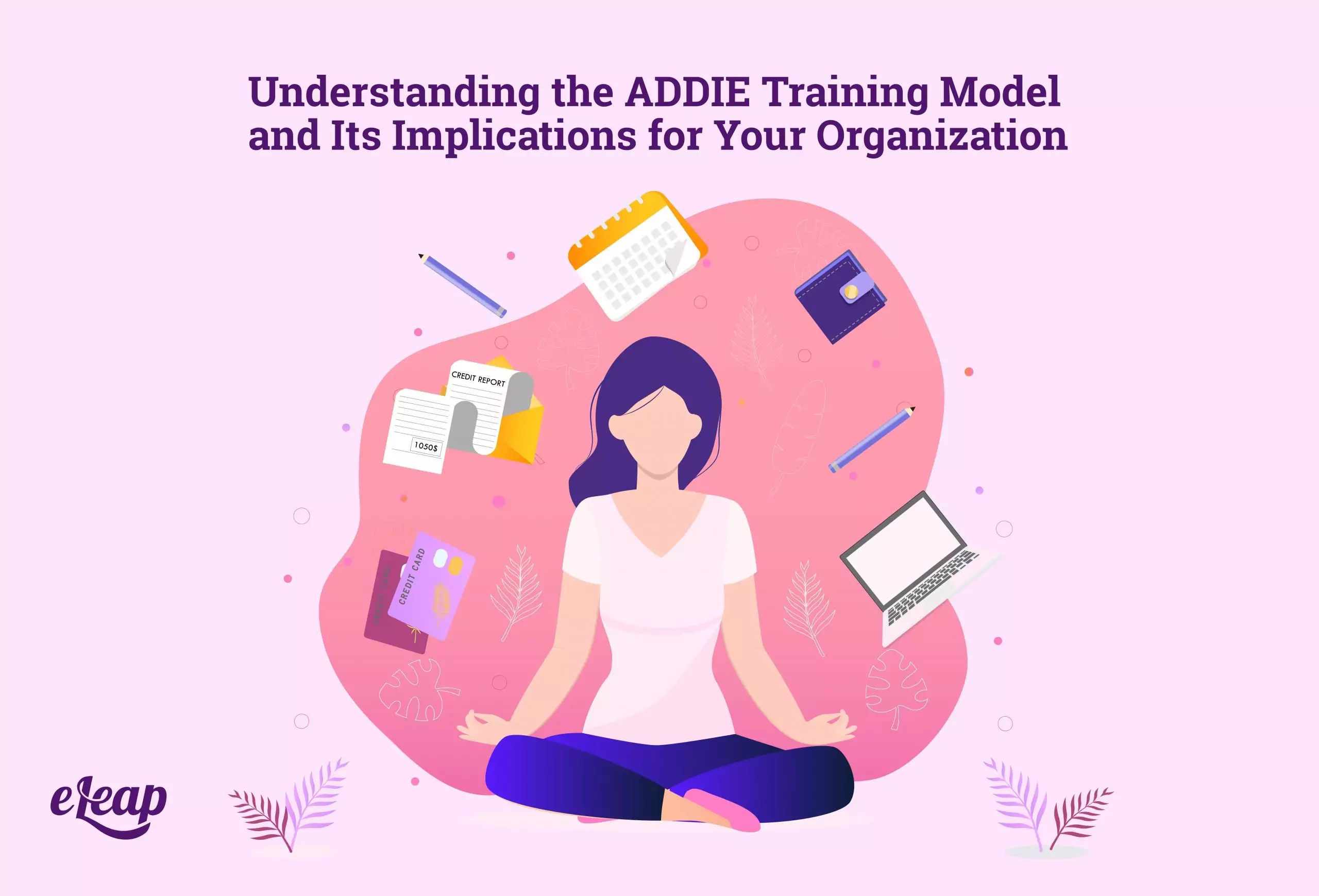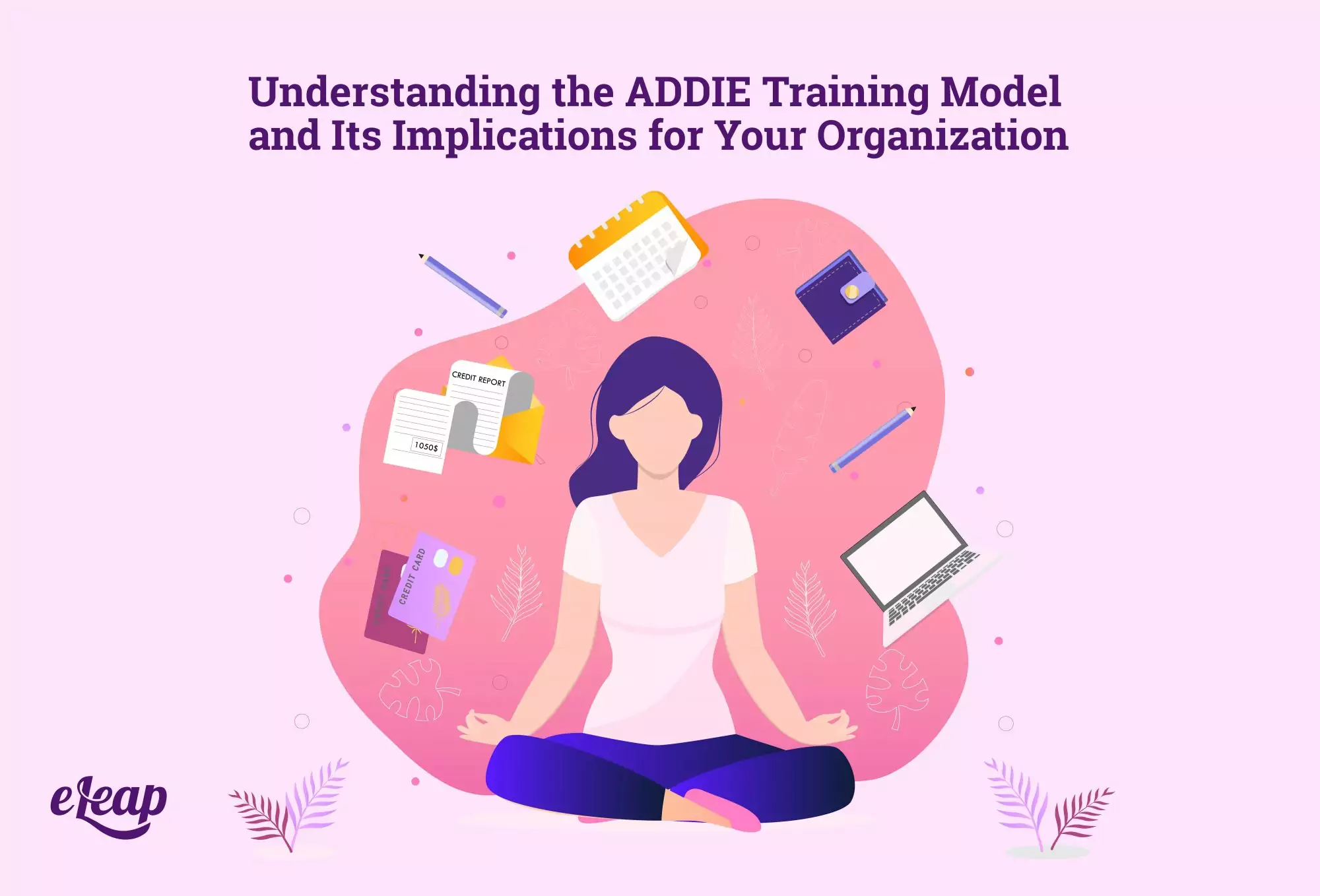Understanding the ADDIE Training Model and Its Implications for Your Organization

The world of learning and development is full of acronyms and jargon. One term that you might have heard yet not fully understood is ADDIE. This training model offers numerous benefits and advantages, but you must understand what it is, how it works, and how to implement it to realize those benefits within your organization.
Not sure what the ADDIE training model is all about? It’s actually a tool for developing better L&D courses within your organization and fostering improved learner outcomes. This post will explore what you need to know.

ADDIE and Instructional Design Models
The ADDIE model is one of over two dozen instructional design models used today to create courses and drive learning. These models are nothing more than frameworks that help you create training routines that lead to desired outcomes, but they vary based on many different factors. In addition to the ADDIE model, you’ll also find the Kirkpatrick model, the Assure model, and the Gerlach-Ely model to name only a few.
While each of these instructional design models differs in key ways, they also share several important commonalities, including:
- Clear goals with clear definitions and value
- Measurable, valid outcomes
- Based on accurate data
- Require a team of designers
- Applicable to problems learners will face in the real world
- Modeled on or designed to teach real-life learner behaviors
Getting to the Heart of the ADDIE Training Model
ADDIE is an acronym, like TMI or LMS. It stands for the five stages within the overall framework, which are as follows:
- Analysis
- Design
- Development
- Implementation
- Evaluation
When creating courses, the steps should be followed in that order. However, don’t assume that it’s a linear progression in all instances. The flow is actually circular, but also centrifugal. The final step – evaluation – is actually at the center of the circle, and informs all other steps. The outer circle is comprised of analysis, design, development, and implementation, but each of those connects to evaluation before moving on to the next step. So, the flow might actually look like this:
- You analyze what learners need to master to create a specific module or course.
- You then evaluate the analysis, ensuring that the process can continue.
- You then begin designing the module.
- The design must then be evaluated before moving to the next step.
- Once the module has been developed, it goes back to evaluation.
- The evaluation tells you if anything needs to be revised before the module being implemented.
- After implementation, you evaluate to ensure that the module is achieving the desired outcomes and, if not, why not and what can be done about it.
The root of the entire process is that final stage – evaluation. Without it, you’re simply creating slapdash modules that may or may not do your learners any good and may or may not tie in with organizational goals. However, there is much more to consider at each stage.
The ADDIE Training Model Stages
Above, we covered a brief outline of the stages within the ADDIE training model. However, there is more you should know. In this section, we’ll delve deeper into the nuts and bolts of each stage, including what questions you should be asking.
Analysis
In this stage, you’re analyzing several key elements before creating the module. For instance, you need to determine who will be receiving the training. You need to understand what the training will be and when it will happen. You’ll also need to answer questions such as where will it happen and how will you achieve the needed learning outcomes?
Design
In the design stage, you need to begin thinking about the format that the learning will take. Will it be a Q&A format? A text-based module? Gamified content? A video presentation? You also need to determine topic order and delivery and ensure that the finished module is actually ready for your learners. Does it cover everything they need to know? Should it lead to other modules?
Development
This is where the rubber meets the road, so to speak. Here, you’ll begin taking your design and turning it into reality. In addition to the actual content creation, you have other considerations during this stage, such as testing to ensure flow, information accuracy, quiz accuracy, and more.
Implementation
Next, you put your module out there in the wild for your learners to use. Make it available through your LMS and then monitor learner progress through the content. Your LMS should give you information about the number of learners who have signed up for the module, the number who have completed it, the number of people who have passed or failed, what areas learners spend the most time on, and other important information.
Evaluation
This is it – the final step in the ADDIE training model, although it’s not really the last step. If you were paying attention previously, you know that evaluation is actually woven throughout all the other steps, while also being the last part of the process. Here, you need to determine key elements about the finished module or course, as opposed to evaluating a single stage. Questions you’ll need to answer include:
- Did the module/content foster improved outcomes for learners? How do you know?
- Did the content perform to expectations? What data backs that up?
- Did a significant number of learners pass the module?
- Does the module need further refinement to support the desired learner outcome?
- Does the module support organizational goals?
The ADDIE training model offers a lot of benefits and provides you with agility and flexibility during and after the development process. However, it is predicated on the assumption that you know what you’re trying to achieve and the requirements that apply to the learning process (key skills to master, etc.).
Is the ADDIE Method Worth It?
Yes, the ADDIE learning model can be an invaluable tool in helping you develop robust training content to benefit your learners. However, it does require that you understand what you’re trying to achieve and that you have a robust LMS for training delivery and progress monitoring. Contact us today to learn more about eLeaP and how the ADDIE method dovetails with our learning management system.